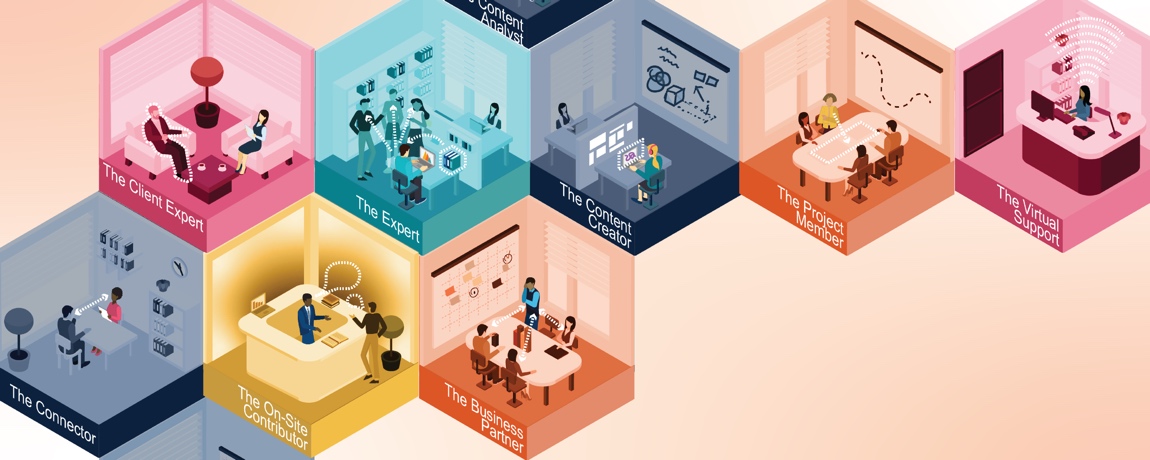
Services
- Change Management
- Pre-Design
- Schematic Design
Client Objectives
- Developed holistic change support strategies and multisensory design solutions to accommodate a variety of workstyle typologies through key workplace layers (policy, technology, and space)
- Designed a change management roadmap with individualized guidance that enabled team members to optimize use of their updated workplace based on their workstyle
- Consolidated on-site tech and operational services, streamlining the team’s back-end workflows and onboarding processes
ATB Financial
Optimizing a Forward-Thinking Office
Though ATB had participated in flexible work for over a decade, the demands of the pandemic spurred a necessary and drastic transformation. Alberta’s largest regionally-based financial institution, ATB Financial and its leadership were ready to begin a more long-term transition to a fully integrated hybrid work model by the start of 2021. Having established spatial and technological considerations and employee input as cornerstones of this transition, ATB still needed a strategic point of view, along with tailor-made recommendations that could help them activate “future of work” design principles and integrate them throughout their workplace for years to come.
ATB contracted PLASTARC to engage in a three-phase process that would properly equip them for this transition. In phase one, PLASTARC conducted a multi-faceted evaluation campaign, which included plan analysis, leader conversations, an assessment of existing data, and visioning workshops. Through this phase, PLASTARC helped ATB define and document its hybrid work approach with clearly articulated guiding principles and research-informed design objectives. This “playbook” articulated how ATB would implement its conception of activity-based working models throughout their portfolio and bring their hybrid principles to life, starting with four pilot spaces, each of which was in a different building operated by ATB. Through recommended technological upgrades, spatial design strategies, policy adjustments, and behavioral practices, PLASTARC helped ATB foster a new workplace model.
In phase two, PLASTARC provided ATB with change management guidance and custom visuals for actively engaging team members in the process of implementing the new workplace approach. Recognizing the distinct needs of ATB’s business units and individual team members, PLASTARC generated a unique set of worstyles and an immersive engagement plan that extended interest in and understanding of ATB’s new practices. The collaboration managed to effectively explain key workplace changes and make the transition that much smoother by prioritizing transparency in its change management strategies.
During phase three, PLASTARC helped ATB expand its conception of activity-based working models beyond floor plans, to include all forms of sensory experience and atmospheric adjustments. To better illustrate these concepts, PLASTARC performed a site-specific pilot design effort that came with a range of potential floor plans that ATB could choose from: Option A was a major reconfiguration that still honored certain elements of the original design; Option C marked a comprehensive reimagining of the space; and Option B was a compromise between the two. Alongside these design propositions, PLASTARC proposed customized success metrics to carefully monitor the success of ATB’s new work environments in order to exercise the flexibility and versatility of the hybrid work environments in supporting ATB team members and responding to real-time feedback. Today, ATB has managed to successfully downsize its real estate portfolio while expanding its hybrid capabilities.

